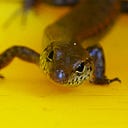Member-only story
Busy Bees
Industrious AF

Taps microphone
Winces at feedback
Hello.
I have an announcement.
It has stopped raining. For the first time in ten days, we have blue sky.
The rain has made the lawn go feral.
And in the fifteen minutes between the sun appearing from behind the rainclouds and the start of the mowing, I managed to get these photos of native bees on weeds.

Native bees love weeds.
I love native bees.
I don’t know much about them — more than 1,600 species have been recorded from Australia and, apart from a handful of big species like the Teddy Bear (fluffy), Blue-banded (stripy) and Green Carpenter Bees (shiny), most are small to tiny — but I delight in seeing them gathering pollen from the hearts of introduced Hawksbeard and Catsear.

They move without pause over petals and between stamens, tucking away pollen, while the flowers on which they…
